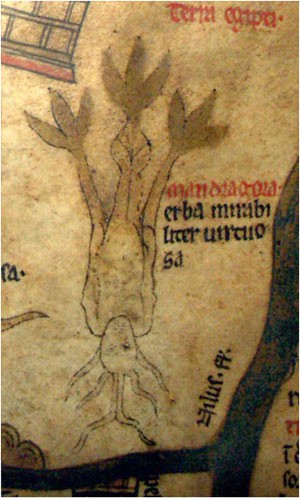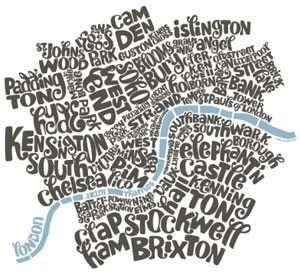 Recently I had fun looking through Becky Garcia’s shop. She has scrabble tile pillows, chalkboard maps and (especially) science pillows with hearts, DNA and frog dissections.
Recently I had fun looking through Becky Garcia’s shop. She has scrabble tile pillows, chalkboard maps and (especially) science pillows with hearts, DNA and frog dissections.
Maps and ways to display data are a constant source of design inspiration for me…
 Recently I had fun looking through Becky Garcia’s shop. She has scrabble tile pillows, chalkboard maps and (especially) science pillows with hearts, DNA and frog dissections.
Recently I had fun looking through Becky Garcia’s shop. She has scrabble tile pillows, chalkboard maps and (especially) science pillows with hearts, DNA and frog dissections.
 For the past several nights (when I should have been working on our taxes) I’ve been watching a 4 part BBC series called The Beauty of Maps on YouTube. The first one is about medieval maps — specifically the fascinating Mappa Mundi (map of the world) at Hereford Cathedral in England (that’s a detail on the left). I’ve only been able to watch one part at a time, as there’s so much to look at and read about after each one. There’s all the resources on the BBC website, many images, the Hereford Cathedral website… Then the series contrasts ancient maps with contemporary artists, such as Grayson Perry’s Map of Nowhere with the Mappa Mundi, so of course I was off to look at that in more detail! That was only the first installment — and I ran out of steam and only bookmarked as interesting Mike Parker’s book Map Addict: A Tale of Obsession, Fudge & the Ordnance Survey. I’ve made it through 3 installments so far, but have to make myself finish those darn taxes before I can enjoy the last one!
For the past several nights (when I should have been working on our taxes) I’ve been watching a 4 part BBC series called The Beauty of Maps on YouTube. The first one is about medieval maps — specifically the fascinating Mappa Mundi (map of the world) at Hereford Cathedral in England (that’s a detail on the left). I’ve only been able to watch one part at a time, as there’s so much to look at and read about after each one. There’s all the resources on the BBC website, many images, the Hereford Cathedral website… Then the series contrasts ancient maps with contemporary artists, such as Grayson Perry’s Map of Nowhere with the Mappa Mundi, so of course I was off to look at that in more detail! That was only the first installment — and I ran out of steam and only bookmarked as interesting Mike Parker’s book Map Addict: A Tale of Obsession, Fudge & the Ordnance Survey. I’ve made it through 3 installments so far, but have to make myself finish those darn taxes before I can enjoy the last one!
Earlier this week I read a review of a new book, Moby-Duck, subtitled “The True Story of 28,800 Bath Toys Lost at Sea and of the Beachcombers, Oceanographers, Environmentalists, and Fools, Including the Author, Who Went in Search of Them.” Publisher’s Weekly summerizes the book
Whimsical curiosity begets a quixotic odyssey and troubling revelations about plastics polluting the seas in former high school teacher and journalist Hohn’s charming account of what he learned searching for 28,800 rubber bath toys lost at sea in 1992. His curiosity, prompted by a student’s quirky essay, begins in 2005 around Sitka, Alaska, where yellow “duckies,” frogs, turtles, and beavers washed up after three-story waves buffeted a container ship traveling from China to America…. The author’s quest leads him to a research vessel trawling for degraded plastic in Hawaiian seas, to the Chinese factory where the toys were manufactured, aboard a container vessel traversing the same route as the original ship (a particularly hair-raising section), and finally to the high Arctic to study the science of oceanic drift. Packed with seafaring lore and astute reporting, this enthralling narrative is the Moby Dick of drifting ducks.
I was quite struck by this line in Janet Maslin’s review
As he (the author, Donovan Hohn) puts it, he was not someone, like the explorers of old, who sought to turn the world into a map. “Quite the opposite,” he says. “I wanted to turn a map into a world.”
I’ve been thinking since then about how when we moved to Santa Fe a year ago, much of the town and surrounding area existed for me only as the paper map in my car. Over these past twelve months, I’ve filled it in with places, faces, building details, memories… Could I turn that into a book? Coincidently I saw Don Moyer’s map, below, on the Handdrawn Map Association. It depicts a day he spent in Manhattan. I don’t draw nearly as well, but there’s something for me to explore here… (Moyer’s has more to look at here on Flickr.)
 This is one of Ursula Hitz‘s limited edition hand lettered maps (this one of Central London, see them all here along with fonts and other prints.
This is one of Ursula Hitz‘s limited edition hand lettered maps (this one of Central London, see them all here along with fonts and other prints.
![]() Found on the Ministry of Type where there are 2 thoughtful posts (here and here) about making maps of words.
Found on the Ministry of Type where there are 2 thoughtful posts (here and here) about making maps of words.
 About a month ago, I read an article in the NY Times about the 16th century astronomer Tycho Brahe, who died under mysterious circumstances in 1601 — was he poisoned by a rival astronomer, Johannes Kepler, or did his bladder burst? The article about the attempts to solve the mystery is quite interesting, and turns out Brahe wasn’t such a nice guy.
About a month ago, I read an article in the NY Times about the 16th century astronomer Tycho Brahe, who died under mysterious circumstances in 1601 — was he poisoned by a rival astronomer, Johannes Kepler, or did his bladder burst? The article about the attempts to solve the mystery is quite interesting, and turns out Brahe wasn’t such a nice guy.
![]() One reason I noticed the article in the first place is that I had used Brahe’s star chart of the 1572 supernova in the constellation Cassiopeia (to the left) in a little book I made some years ago, Jean Follain’s poem “Music of Spheres” (see bottom of this post). One of the things I like best about living in Santa Fe is that I can see the stars and planets at night. Reading the article and finding my book again reminded me to go check out our night sky — which I’ve been doing regularly since then.
One reason I noticed the article in the first place is that I had used Brahe’s star chart of the 1572 supernova in the constellation Cassiopeia (to the left) in a little book I made some years ago, Jean Follain’s poem “Music of Spheres” (see bottom of this post). One of the things I like best about living in Santa Fe is that I can see the stars and planets at night. Reading the article and finding my book again reminded me to go check out our night sky — which I’ve been doing regularly since then.
 So I suppose it was bound to happen that I’ve been running across star-themed things and articles for the past few weeks. I think my favorite are these Constellation Eco Cards — “Each card contains an astronomically accurate representation of one of the ten most prominent constellations found in the Northern and Southern hemispheres; the diameter of each star on your card is directly related to that star’s brightness.” Another one, appropriate for this time of year, is this star ornament you can make yourself.
So I suppose it was bound to happen that I’ve been running across star-themed things and articles for the past few weeks. I think my favorite are these Constellation Eco Cards — “Each card contains an astronomically accurate representation of one of the ten most prominent constellations found in the Northern and Southern hemispheres; the diameter of each star on your card is directly related to that star’s brightness.” Another one, appropriate for this time of year, is this star ornament you can make yourself.
Music of Spheres
by Jean Follain
translated form the French by Czeslaw Milosz and Robert HassHe was walking a frozen road
in his pocket iron keys were jingling
and with his pointed shoe absent-mindedly
he kicked the cylinder
of an old can
which for a few seconds rolled its cold emptiness
wobbled for a while and stopped
under a sky studded with stars.